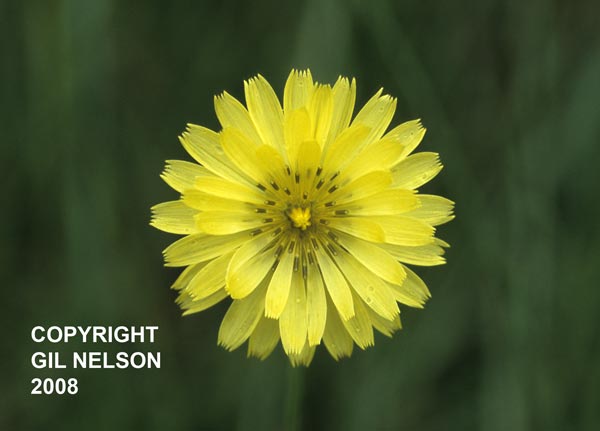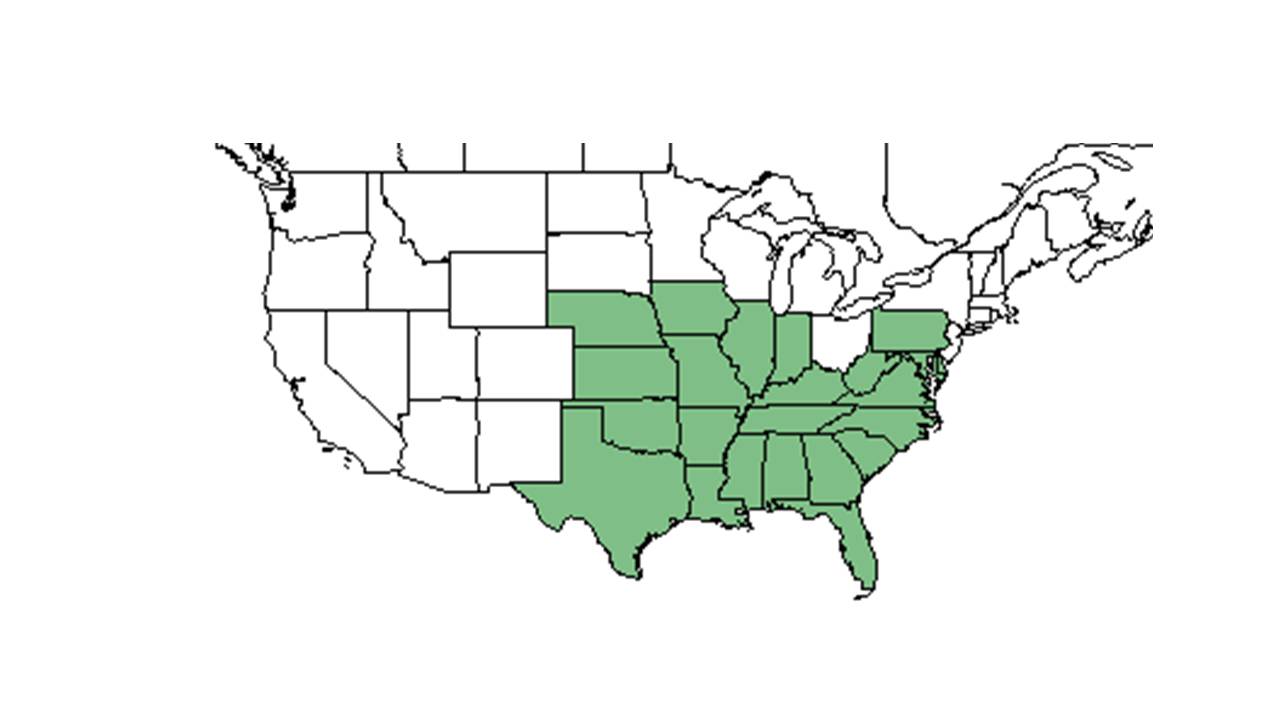Difference between revisions of "Pyrrhopappus carolinianus"
(→Distribution) |
|||
| Line 25: | Line 25: | ||
===Habitat=== <!--Natural communities, human disturbed habitats, topography, hydrology, soils, light, fire regime requirements for removal of competition, etc.--> | ===Habitat=== <!--Natural communities, human disturbed habitats, topography, hydrology, soils, light, fire regime requirements for removal of competition, etc.--> | ||
===Phenology=== <!--Timing off flowering, fruiting, seed dispersal, and environmental triggers. Cite PanFlora website if appropriate: http://www.gilnelson.com/PanFlora/ --> | ===Phenology=== <!--Timing off flowering, fruiting, seed dispersal, and environmental triggers. Cite PanFlora website if appropriate: http://www.gilnelson.com/PanFlora/ --> | ||
| + | Blooms from July to November (Nelson 2005). | ||
| + | |||
===Seed dispersal=== | ===Seed dispersal=== | ||
===Seed bank and germination=== | ===Seed bank and germination=== | ||
Revision as of 14:03, 17 June 2015
| Pyrrhopappus carolinianus | |
|---|---|

| |
| Photo taken by Gil Nelson | |
| Scientific classification | |
| Kingdom: | Plantae |
| Division: | Magnoliophyta – Flowering plants |
| Class: | Magnoliopsida – Dicotyledons |
| Order: | Asterales |
| Family: | Asteraceae ⁄ Compositae |
| Genus: | Pyrrhopappus |
| Species: | P. carolinianus |
| Binomial name | |
| Pyrrhopappus carolinianus (Walter) DC. | |

| |
| Natural range of Pyrrhopappus carolinianus from USDA NRCS Plants Database. | |
Contents
Description
Distribution
Found on roadsides, dry fields, disturbed sites, and bottomlands. P. carolinianus is a native plant with weedy tendencies (Nelson 2005).
Ecology
Habitat
Phenology
Blooms from July to November (Nelson 2005).